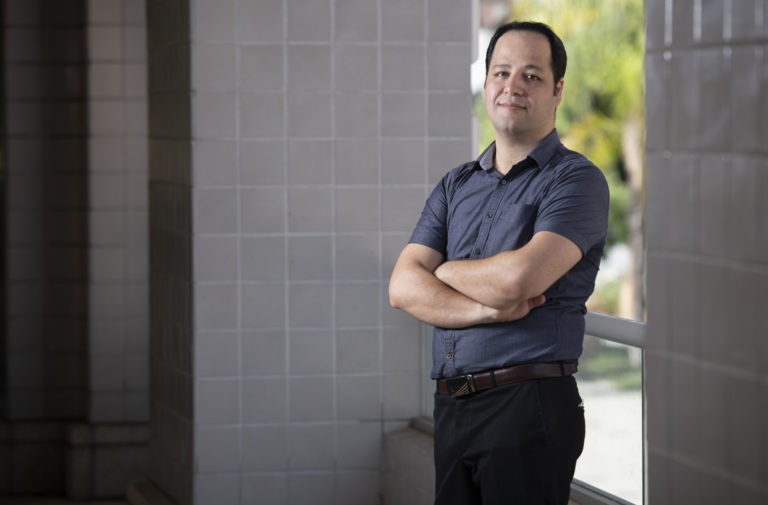FOR IMMEDIATE RELEASE
In a paper published today in Advanced Biosystems, the researchers describe how they combined artificial intelligence, microfluidics and nanoparticle inkjet printing in a device that enables the examination and differentiation of cancers and healthy tissues at the single-cell level.
“Cancer cell and tumor heterogeneity can lead to increased therapeutic resistance and inconsistent outcomes for different patients,” said lead author Kushal Joshi, a former UCI graduate student in biomedical engineering. The team’s novel biochip addresses this problem by allowing precise characterization of a variety of cancer cells from a sample.
“Single-cell analysis is essential to identify and classify cancer types and study cellular heterogeneity. It’s necessary to understand tumor initiation, progression and metastasis in order to design better cancer treatment drugs,” said co-author Rahim Esfandyarpour, UCI assistant professor of electrical engineering & computer science as well as biomedical engineering. “Most of the techniques and technologies traditionally used to study cancer are sophisticated, bulky, expensive, and require highly trained operators and long preparation times.”
He said his group overcame these challenges by combining machine learning techniques with accessible inkjet printing and microfluidics technology to develop low-cost, miniaturized biochips that are simple to prototype and capable of classifying various cell types.
In the apparatus, samples travel through microfluidic channels with carefully placed electrodes that monitor differences in the electrical properties of diseased versus healthy cells in a single pass. The UCI researchers’ innovation was to devise a way to prototype key parts of the biochip in about 20 minutes with an inkjet printer, allowing for easy manufacturing in diverse settings. Most of the materials involved are reusable or, if disposable, inexpensive.
Another aspect of the invention is the incorporation of machine learning to manage the large amount of data the tiny system produces. This branch of AI accelerates the processing and analysis of large datasets, finding patterns and associations, predicting precise outcomes, and aiding in rapid and efficient decision-making.
By including machine learning in the biochip’s workflow, the team has improved the accuracy of analysis and reduced the dependency on skilled analysts, which can also make the technology appealing to medical professionals in the developing world, Esfandyarpour said.
“The World Health Organization says that nearly 60 percent of deaths from breast cancer happen because of a lack of early detection programs in countries with meager resources,” he said. “Our work has potential applications in single-cell studies, in tumor heterogeneity studies and, perhaps, in point-of-care cancer diagnostics – especially in developing nations where cost, constrained infrastructure and limited access to medical technologies are of the utmost importance.”
This project was supported by startup funding from UCI’s Henry Samueli School of Engineering.
About the University of California, Irvine: Founded in 1965, UCI is the youngest member of the prestigious Association of American Universities. The campus has produced three Nobel laureates and is known for its academic achievement, premier research, innovation and anteater mascot. Led by Chancellor Howard Gillman, UCI has more than 36,000 students and offers 222 degree programs. It’s located in one of the world’s safest and most economically vibrant communities and is Orange County’s second-largest employer, contributing $5 billion annually to the local economy. For more on UCI, visit www.uci.edu.
Media access: Radio programs/stations may, for a fee, use an on-campus ISDN line to interview UCI faculty and experts, subject to availability and university approval. For more UCI news, visit news.uci.edu. Additional resources for journalists may be found at communications.uci.edu/for-journalists.




